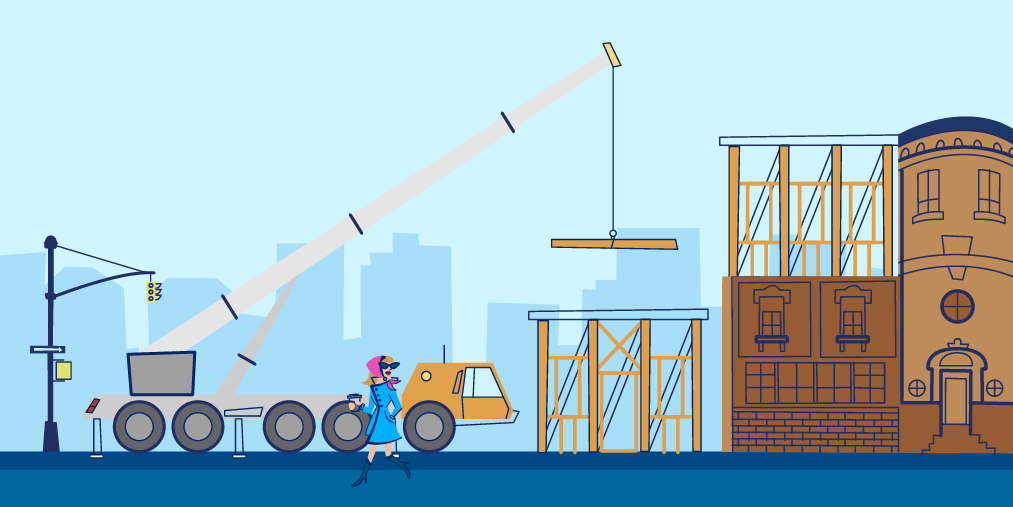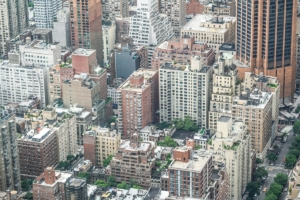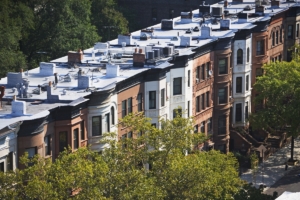According to the New York City Department of Buildings, construction has steadily increased the number of homes in the city since the 2008 financial crisis. In 2018 alone, new construction added 36,353 new units to the housing market, increasing the city’s total supply of homes by approximately 1 percent — 184 more new units than in 2017. These additional units come as the city’s population has grown, rising 5 percent between 2010 and 2017, according to U.S. Census estimates. Yet despite the increased construction and interest in living in New York City, the number of homes in some areas of the city has shrunk.
Key Findings:
-
Despite a rising number of housing units citywide, many New York City buildings have seen a decline in their available housing supply as a result of alterations, conversions, and the combination of multiple housing units into one.
-
Over the past four years, developers debuted more than 1,241 buildings across NYC with fewer units than when the buildings were first acquired.
-
This trend has taken place across the city. Neighborhoods where the most buildings have seen a decrease in their number of units include Central Harlem, Park Slope, the Upper West Side, Upper East Side and Bedford-Stuyvesant.
-
Anecdotal evidence calls into question the profitability of these building-shrinking conversions.
Building Revamps Can Lead to Fewer Units
Given New York City’s rich history and large quantity of older housing stock, it’s common for enterprising developers to update and remake buildings to suit modern tastes. Yet our research shows that this phenomenon can often lower the total number of homes available to New Yorkers. Over the past four years, developers debuted 1,241 buildings across the city with fewer units than when the buildings were acquired — roughly 300 each year. These properties were spread across all boroughs, with 579 in Brooklyn, 481 in Manhattan, 123 in Queens, 30 in the Bronx and 28 in Staten Island.
Developers Cater to the Wealthy
In many of these cases, developers have converted previously mundane rental buildings into high-end condos marketed to a wealthier clientele. More recently, in 2018, these conversions include Yorkville’s Park Mansion, where developers converted 30 units previously owned by the nonprofit Inwood House into six luxury 3- and 4-bedroom residences, all priced in excess of $5 million.
Similarly, a number of larger West Village buildings have shed units as developers have converted them from rental to condo buildings. Among these is the Shephard, where developers debuted 38 condos — including a $24.5 million, 4-bedroom penthouse — in a building that as recently as 2014 had contained 145 rental units, which listed on StreetEasy from $3,350 per month. Overall, the total housing supply in the West Village declined by 102 units in 2017, and 26 units the year prior.
From Multifamily Rentals to Single-Family Houses
Many members of the global elite, including Russian oligarch and Chelsea Football Club owner Roman Abramovich, have skipped the condo market altogether in favor of combining multiple stately townhouses into one mansion, a trend that similarly reduces the number of homes available in the city. On the Upper West Side, more than 50 buildings saw an overall decrease in units in 2017 and 2018, as developers converted multifamily rental buildings into single-family residences.
A 6,300-square-foot townhouse on West 81st Street that once held 12 separate units is currently listed for $10,488,000. Similarly, this 8,770-square-foot West 75th Street home, which previously housed 10 individual units, recently entered contract after spending more than a year on the market and getting a $2.5 million cut to its listing price.
Eighteen buildings in the neighborhood shrunk their unit count in 2018, making the Upper West Side one of the top five neighborhoods in the city in terms of shrinking buildings, behind only Central Harlem. This trend has touched other pricey neighborhoods, including the Upper East Side, Cobble Hill, Park Slope and Carroll Gardens, the latter of which saw the total number of units fall both in 2017 and in 2018.
| Neighborhood | Total Buildings w/ Decrease in Units | Units Lost as a Result |
|---|---|---|
| Central Harlem | 112 | 831 |
| Upper West Side | 85 | 442 |
| Upper East Side | 80 | 529 |
| Park Slope | 67 | 118 |
| Bedford-Stuyvesant | 53 | 136 |
Profits Are Not Always What They Seem
While this trend partly reflects market demand for luxury dwellings, demand for high-priced homes has waned considerably over the past few years, and converting relatively affordable homes into elegant residences for the upper class carries risks.
This townhouse on West 75th Street previously held 11 individual rental units — some of which were listed on StreetEasy — until its acquisition by a developer in 2015 for $9.1 million. After what appear to be significant and costly renovations, the developer listed the home for sale in 2017 for roughly $16 million.
Yet with the high-end market facing headwinds, the developer slashed the price on the home by nearly $4 million, erasing more than half of the gross profit on the redevelopment of the unit. As the townhouse sits on the market for $12 million, taxes, maintenance, and other carrying costs continue to accrue, calling into question the financial benefits of these types of conversions.
Shrinking Unit Numbers in Upper Manhattan
This trend of shrinking buildings is not confined to pricey neighborhoods. In 2018, the number of apartments in Hamilton Heights dropped by 12 units in total — due to the reconstruction of 72 Hamilton Terrace and few others. Central Harlem led all neighborhoods in the city in the number of buildings with reduced units, with 27 cutting their numbers in 2018, including the historic Randolph Houses on West 114th Street. However, it’s worth noting that many of these Upper Manhattan conversions remain multifamily residences, with some, including the Randolph Houses, featuring affordable opportunities.
How We Did It
This research is based on New York City Department of Buildings certificates of occupancy data, representing all new residential construction as well as major alterations. The number of new units in each building represents the difference in the number of units before and after renovation, or full amount for new construction, as defined in the certificates.
—
Send your NYC real estate stories and tips to StreetEasy editors at tips@streeteasy.com. You will remain anonymous. And hey, why not like StreetEasy on Facebook and follow @streeteasy on Instagram?










